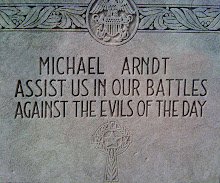Posted by: Michael Arndt on December 22, 2008
Used to be that the maids and janitors at the Hyatt Regency Chicago cleaned the giant hotel with industrial-strength chemicals like maids and janitors do almost everywhere. Now they scrub it down with water, and the place is no more germy or grimy than it was before. The new cleansers are also cheaper. And get this: They’re safe to drink.
All right, I know this is sounding too much like one of those infomercials. But stick with me: The water, which admittedly is processed, has scientific research behind it as well as seals of approval from the Food & Drug Administration and other government authorities.
It's actually pretty easy to turn water into a disinfectant and a degreaser. Here's a quickchemistry lesson from Patrick Lucci, marketing director at Electrolyzer, a Woburn (Mass.) startup that supplies Hyatt--and a slew of other hotels--with a contraption to make its new cleaning agents:
First you dump salt into tub of regular tap water. Then you zap it with low-voltage electricity. This splits up the sodium and chlorine that make up salt. The chlorine side because hypochlorous acid, which is a more powerful sanitizer than bleach. The sodium side becomes sodium hydroxide, a detergent-quality alkaline. You use a membrane to separate the two. And that's it, except that Electrolyzer has patented a process that allows both products to remain potent for up to three months.
Electrolyzed water has been around for years in Japan. It's commonly sprayed on meats and vegetables to kill bacteria like E. coli and extend food's consume-by dates. (Remember, the water's nontoxic.) It's also widely used as a surface disinfectant in hospitals.
Electrolyzer was founded by two former chemical-industry execs, Samuel Coco and Donald Harper, in 2003 to make and market the germ-killing half of water. It wasn't an immediate hit. Though the antimicrobial liquid costs only a half-penny a gallon to produce, restaurants had a hard time earning back the price of the electrolysis machine, which sell for as much as $12,000.
Lucci hit on a solution in 2005. He asked an Ohio restaurant chain that was about to return its machines to try an experiment. Instead of pouring the alkaline byproduct down the drain, Lucci said, test it in a restaurant dishwasher and mop buckets. The client reported that the potion worked better on grease than detergent. The customer eventually dropped Electrolyzer anyway, but no matter. By then, Lucci had moved onto bigger fish, marketing the water-splitter to hotels, where guestrooms needed disinfecting and kitchens needed cleaning.
Chicago's Hyatt Regency has been spritzing germ-killing water on fresh food in its kitchens for years, and scrubbing its kitchen floors with a water-derived degreaser just as long. In 2007, management put out the call to employees for "green" initiatives to help win a Green Seal from the city in 2009. Ryan Baldwin, the hotel's assistant rooms executive, proposed using the product to clean rooms, too. The green angle: No more harsh chemicals.
Management began tests on a few rooms in 2007. Last April, it switched over entirely to electrolyzed water. The Hyatt Regency is a massive complex, the largest in the Global Hyattchain. The twin-tower hotel has seven restaurants, 2,019 rooms, and 228,000 square feet of meeting space. Before, the hotel used 4,640 gallons of cleaning products a month, according to a company handout. Now, except for cleaning carpets and a few other jobs, it uses only water. The 88-gallon electrolyzer cost $7,800. The hotel figures it earned that back in less than two months.
Hyatt executives say they're studying this pilot project to see whether they should make the change at other properties. Other outfits are already using electrolyzed water in dozens of locations, from hotels and restaurants to schools and prisons.
Baldwin takes me into a sub-basement to show off the machine. It's basically a big plastic barrel with a divider down the middle. Two tubes come out of it--one to fill spray bottles with sanitizer, and the other to fill cleaning pails with what you might call "lye lite."
And yes, to show that the liquids aren't harmful, he has drunk them both. So what do they taste like? Baldwin compares the detergent water to plastic. The disinfectant water reminds him of bad swimming pool water.


No comments:
Post a Comment